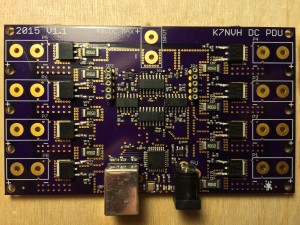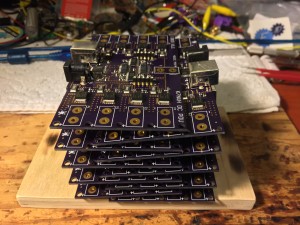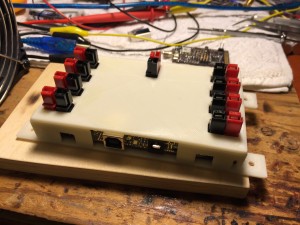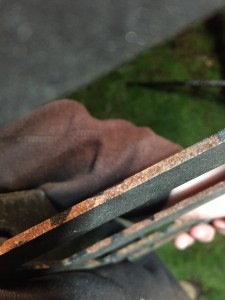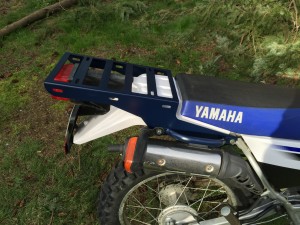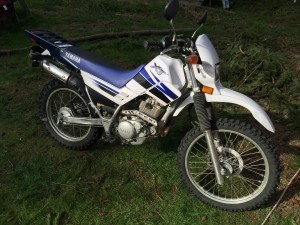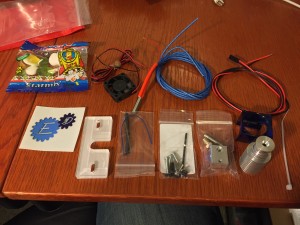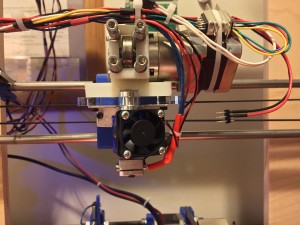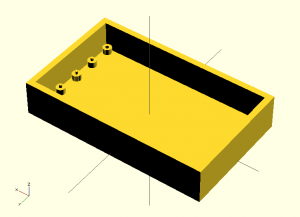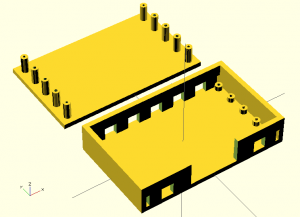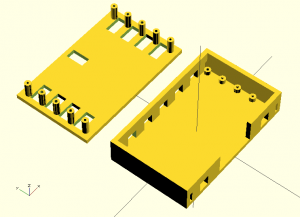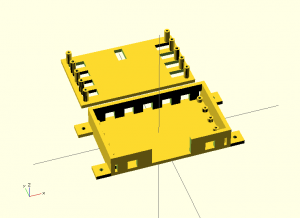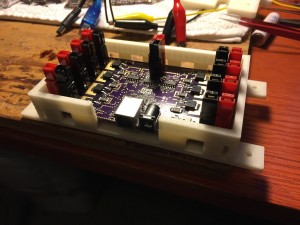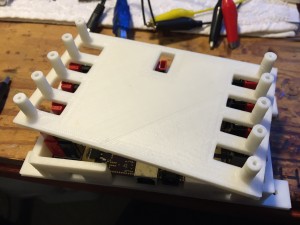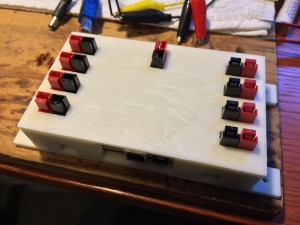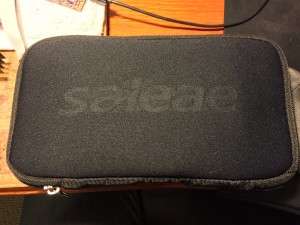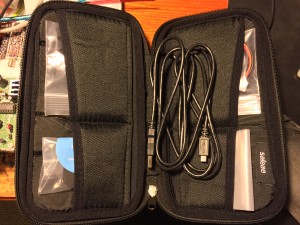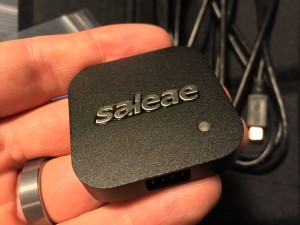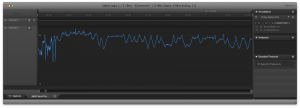I mentioned a post or two ago that I was working on a project, and had designed a 3D printable case for it, and that I’d get back to posting about the project itself. So, I’d like to introduce my DC PDU (Power Distribution Unit)!
The design goals here were to create essentially a remote controllable power strip, for DC powered devices. You have one input port that gets distributed to 8 output ports. Each output is individually controllable, as well as individually senses the power flowing through the port.
PDUs aren’t new devices by any means. There are a large variety of PDUs made by companies like TrippLite or APC. However, these are almost universally AC power devices. These devices are designed to sit in a datacenter or with other information technology, and allow administrators to control power to servers and networking gear remotely.
Let’s imagine that you have a remote location where you have some solar panels, batteries, and your devices run on DC power. If you want to be able to control power to these devices with a PDU, suddenly you need to add an inverter, as well as converters back down to DC power on either side of that PDU. It introduces a lot of cost, and more importantly, a lot of inefficiency. Each of those conversion steps throws away power, and with limited power budgets like you see with many solar setups, these are losses that you really can’t tolerate.
I’ve run into this exact situation with a project I’m working on in the local area with some other folks, so I decided to build a PDU that would work directly on DC power. No conversions needed. The PDU itself would draw very little power managing the logic, and there wouldn’t be any conversion losses.
Combine it with some connectors, and a case, and you have a complete device for managing power at remote locations!
I’ve built a small stack of them so far…
And printed some cases as well.
While I built the device to serve my needs, and the local project, I figured it may have broader appeal, so I’ve also decided to try my hand at selling them. I’ve created a store on Tindie, and added my product. https://www.tindie.com/products/nigelvh/dc-power-distribution-unit/
I’ve also made the firmware the runs on the device available on GitHub, so that folks who are interested can modify or contribute to the project, or at the least, if they notice any bugs, they can notify me there so I can fix them and release a software update. https://github.com/nigelvh/K7NVH-DC-PDU
I’ve had reasonable luck so far with selling a unit or two, and I’m hoping that over time I’ll see more sales and word of mouth will spread. If it doesn’t, I built it for my needs anyway, so nothing lost there, and if it does, it’s a nice little bonus.

